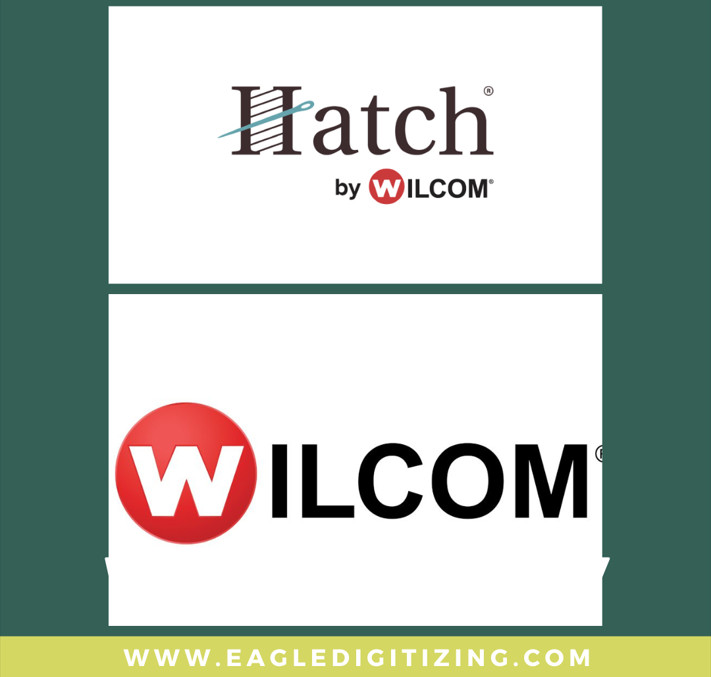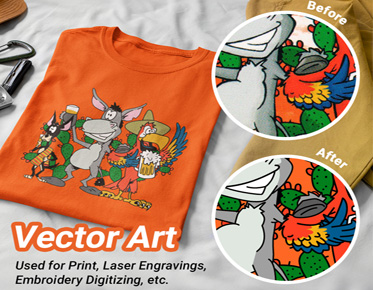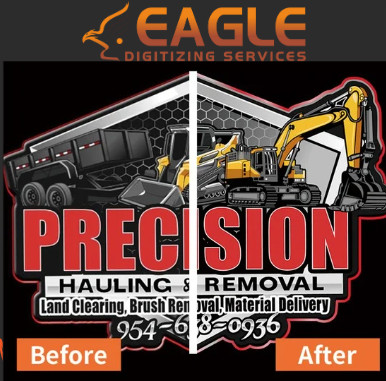Which Embroidery Digitizing Software is Easier to Use: Wilcom vs. Hatch
Embroidery digitizing software has revolutionized the way designs are transformed into intricate embroidery patterns. With the market flooded with options, it's essential to understand which software offers the best user experience. In this comparison, we'll explore Wilcom and Hatch, two leading contenders in the field, to determine which one is easier to use for both professionals and hobbyists.
History
and Background
Wilcom has a rich history in the embroidery industry, dating back to its inception in the 1970s. Initially developed as a tool for creating intricate designs for embroidery machines, Wilcom has evolved into a comprehensive digitizing software solution trusted by professionals worldwide.
Key
Features
Wilcom is renowned for its robust feature set, including advanced stitching capabilities, customizable design elements, and powerful editing tools. With support for a wide range of file formats and seamless integration with embroidery machines, Wilcom offers users unparalleled flexibility and control over their designs.
User
Interface
Wilcom's user interface strikes a balance between functionality and simplicity, allowing users to navigate through its various features with ease. With intuitive controls and customizable layouts, Wilcom ensures that users can focus on their creative process without being bogged down by technical complexities.
History
and Background
Hatch, introduced by Wilcom, represents a newer entrant into the embroidery digitizing software market. Born out of the need for a more accessible and user-friendly solution, Hatch combines Wilcom's expertise with modern design principles to provide a seamless digitizing experience for users of all skill levels.
Key
Features
Hatch boasts a range of key features designed to simplify the digitization process, including automated stitching algorithms, intuitive design tools, and real-time previews. Whether you're a seasoned professional or a novice enthusiast, Hatch offers a user-friendly interface and intuitive workflow to bring your creative vision to life.
User
Interface
Hatch's user interface is designed with simplicity and usability in mind, featuring clear navigation menus, drag-and-drop functionality, and customizable workspaces. With its intuitive layout and streamlined workflow, Hatch ensures that users can focus on their designs without getting lost in technical jargon.
Learning
Curve
When it comes to the learning curve, Wilcom may have a steeper initial learning curve due to its extensive feature set and advanced capabilities. However, once users become familiar with its tools and functionalities, they can unlock a world of creative possibilities. On the other hand, Hatch's user-friendly interface and intuitive design make it easier for beginners to get started with digitizing right away.
Navigation
and Usability
Both Wilcom and Hatch prioritize navigation and usability, but they approach it differently. Wilcom offers a comprehensive set of tools and features accessible through a centralized interface, allowing users to customize their workspace to suit their needs. In contrast, Hatch streamlines the digitization process with a more guided approach, presenting users with intuitive workflows and simplified controls.
Customization
Options
In terms of customization options, Wilcom offers extensive flexibility, allowing users to fine-tune every aspect of their designs to perfection. From stitch editing to color matching, Wilcom empowers users to create unique and intricate patterns with ease. Hatch, while not as feature-rich as Wilcom, provides enough customization options to satisfy the needs of most users, making it a more accessible choice for beginners.
Stitch
Editing Capabilities
Wilcom's stitch editing capabilities are second to none, offering users precise control over every stitch and thread in their designs. With advanced algorithms and customizable parameters, Wilcom ensures that users can achieve stunning results with minimal effort. Hatch, while not as advanced as Wilcom, provides basic stitch editing tools that are suitable for most embroidery projects.
Auto-Digitizing
Features
Both Wilcom and Hatch offer auto-digitizing features that allow users to convert images and artwork into embroidery designs automatically. While Wilcom's auto-digitizing algorithms are more sophisticated and accurate, Hatch's approach is more beginner-friendly and accessible, making it ideal for users who are new to digitizing.
Advanced
Design Elements
When it comes to advanced design elements such as 3D effects, appliqué, and texture mapping, Wilcom leads the way with its comprehensive toolset and advanced algorithms. From intricate lace patterns to realistic fabric textures, Wilcom empowers users to push the boundaries of their creativity. While Hatch offers some basic design elements, it lacks the depth and sophistication of Wilcom's offerings.
Supported
File Formats
Both Wilcom and Hatch support a wide range of file formats, allowing users to import and export their designs with ease. From popular image formats like JPEG and PNG to proprietary embroidery formats like DST and PES, Wilcom and Hatch ensure compatibility across platforms and devices.
Compatibility
with Embroidery Machines
Wilcom and Hatch are compatible with a variety of embroidery machines, allowing users to transfer their designs seamlessly from the software to the machine. Whether you're using a single-head home machine or a multi-head industrial machine, Wilcom and Hatch ensure that your designs stitch out perfectly every time.
Integration
with Other Software
In addition to embroidery machines, Wilcom and Hatch integrate seamlessly with other software applications, allowing users to streamline their workflows and enhance their productivity. Whether you're importing designs from graphic design software or exporting finished files to a print shop, Wilcom and Hatch ensure smooth interoperability with third-party tools and platforms.
Availability
of Tutorials and Guides
Wilcom and Hatch provide extensive tutorials, guides, and documentation to help users get started with the software and master its features. From basic tutorials on digitizing techniques to advanced guides on stitching and editing, Wilcom and Hatch ensure that users have access to the resources they need to succeed.
Online
Community and Forums
Both Wilcom and Hatch have active online communities and forums where users can connect with fellow embroiderers, share tips and tricks, and seek advice and support. Whether you're a seasoned professional or a novice enthusiast, Wilcom and Hatch provide a supportive and collaborative environment where users can learn, grow, and succeed together.
Technical
Support Options
In addition to online resources, Wilcom and Hatch offer various technical support options to assist users with troubleshooting and problem-solving. From email support to live chat and phone support, Wilcom and Hatch ensure that users can get the help they need when they need it, ensuring a seamless and stress-free experience.
Comparison
of Pricing Models
Wilcom and Hatch offer different pricing models to cater to the diverse needs and budgets of users. While Wilcom typically offers perpetual licenses with one-time fees, Hatch adopts a subscription-based model with monthly or annual payments. Depending on your budget and usage requirements, you can choose the option that best suits your needs.
Available
Packages and Features
Both Wilcom and Hatch offer various packages with different features and capabilities. From basic packages for hobbyists and enthusiasts to premium packages for professionals and businesses, Wilcom and Hatch ensure that users have access to the tools and resources they need to bring their creative vision to life.
Value
for Money
When it comes to value for money, Wilcom and Hatch offer competitive pricing and comprehensive features that justify the investment. Whether you're a hobbyist looking to explore your creative side or a professional seeking to elevate your craft, Wilcom and Hatch provide the tools and support you need to succeed, making them both excellent choices for embroidery digitizing software.
In conclusion, both Wilcom
and Hatch offer powerful tools and resources for embroidery digitizing, each with its strengths and weaknesses.
Wilcom excels in advanced features and customization options, making it the
preferred choice for experienced professionals. On the other hand, Hatch
prioritizes simplicity and accessibility, making it an excellent option for
beginners and hobbyists. Ultimately, the choice between Wilcom and Hatch
depends on your individual preferences, budget, and usage requirements. By
carefully considering the factors outlined in this comparison, you can make an
informed decision and choose the software that best suits your needs.



